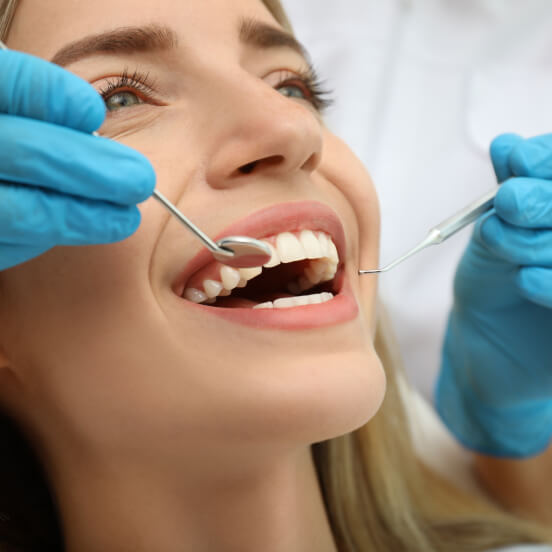Periodontal Therapy in Yankton, SD
Maintaining optimal oral health is crucial for a confident smile and overall well-being. However, gum disease can pose a significant threat to the health of your gums and teeth if left untreated. This bacterial infection inflames the soft tissue surrounding the teeth and, as it progresses, can lead to severe complications such as tooth mobility and loss.
At Yankton Dental Clinic, Dr. William Reardon is one of the best dentists in Yankton, SD, for your gum health concerns. Learn more about our periodontal treatments and which best meets your needs.

Understanding Gum Disease and Its Consequences
Gum disease, also referred to as periodontal disease or periodontitis, is a bacterial infection that triggers inflammation in the soft tissue surrounding the teeth. If left untreated, it can lead to severe complications. Over time, gum disease causes the erosion of the bone supporting the teeth, resulting in tooth mobility and eventual loss.
Symptoms and Effects of Gum Disease
Gum disease can manifest in various ways depending on its stage of progression. Some common symptoms include:
- Redness and swelling
- Tenderness
- Receding gums
- Bleeding gums
- Formation of periodontal pockets
- Halitosis (bad breath)
- Dental gaps
When preventive measures are no longer effective, especially in the later stages where damage becomes permanent, nonsurgical and surgical treatments become essential for mitigating the effects of gum disease.

Nonsurgical Treatments for Gum Disease
Oral or topical antibiotics may be prescribed to combat the infection. Take antibiotics as prescribed by your dentist for the best results.
Scaling and root planing are performed under local anesthesia to remove bacteria beneath the gum line and smooth the tooth roots, preventing the accumulation of plaque and bacteria.
Surgical Treatments for Advanced Gum Disease
Flap Surgery
During flap surgery, a periodontist creates an incision along the gum line, temporarily shifting the gum tissues to provide better access for thorough cleaning. If bone loss has occurred, the periodontist may reshape the bone ridge to facilitate daily oral hygiene routines.
Dental Bone Grafts
When significant bone loss has transpired, bone-grafting materials stimulate new bone growth in areas with insufficient bone tissue. These grafts act as scaffolds, encouraging natural regeneration.
Gum Grafts
Gum recession caused by gum disease can be rectified through gum grafts. Tissue is obtained either from the roof of the mouth or a tissue bank and is surgically sutured into the areas lacking gum tissue, restoring a healthy gumline.
Guided Tissue Regeneration
During guided tissue regeneration, a biocompatible membrane is placed between the existing bone and tooth, preventing unwanted tissue growth and facilitating bone regeneration.
Platelet-Rich Plasma (PRP)
PRP therapy involves concentrated platelets from the patient’s blood to stimulate bone and gum tissue regeneration. The plasma, separated from red and white blood cells, is placed in areas with tissue or bone loss to encourage growth.
Frequently Asked Questions
The appropriate periodontal therapy procedure depends on the stage and severity of your gum disease. A periodontist will evaluate your condition and recommend the most suitable treatment plan.
While periodontal therapy procedures can effectively treat gum disease and prevent further progression, the extent of reversal depends on the stage of the disease and individual factors. Early intervention offers the best chance for restoring oral health.
While early detection and intervention are crucial in effectively treating gum disease, it’s never too late to seek treatment. However, the severity and extent of the disease may affect the treatment options and outcomes. In the later stages of gum disease, when significant bone loss and tooth mobility have occurred, it may be more challenging to fully reverse the damage.
When dealing with gum disease, it’s best to avoid certain behaviors and habits that can worsen the condition or impede the effectiveness of treatment. Here are some things to avoid:
- Neglecting oral hygiene
- Smoking or tobacco use
- Ignoring professional dental care
- Delaying treatment
- Self-medication without professional guidance
Seeking professional guidance and following the advice of a qualified periodontist is crucial for effectively managing gum disease.
